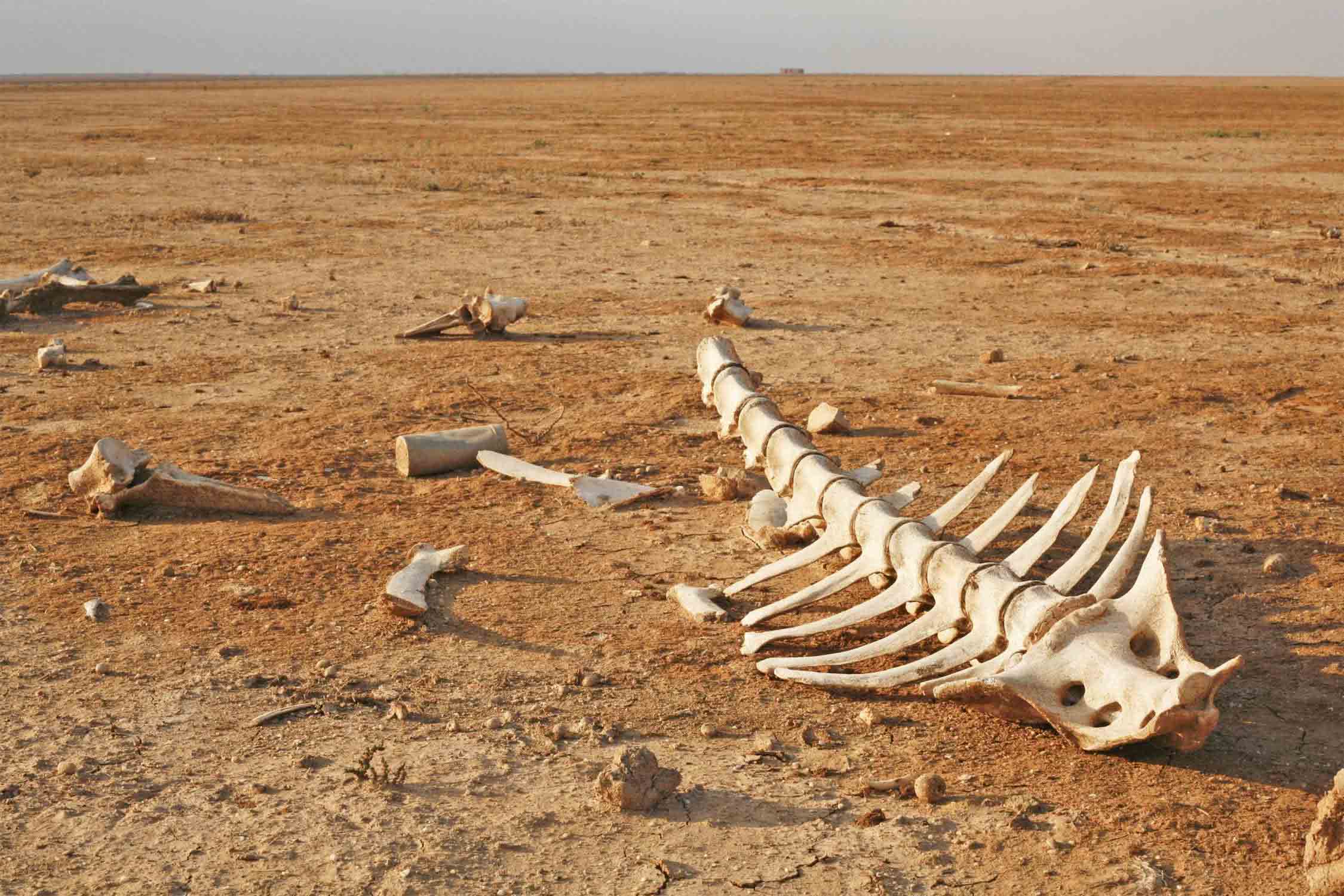Biodiversity Crisis - Vanishing Species
January 9, 2020 | Expert Insights

Background
Biodiversity loss can be defined as the extinction of species worldwide and the loss of species in a certain habitat. There have been five such major mass extinction and we are living through what is being termed as the Sixth or the Holocene extinction.
The first such extinction took place about 444 million years caused by a severe ice age. The second one was 375 million years ago as a result of algal blooms which sucked the oxygen out of seawater suffocating bottom dwellers. The third, the worst one as it nearly extinguished life on earth, was 250 million years ago caused by a deadly combination of CO2 and methane, another greenhouse gas, poisoning the air and acidifying the oceans. The fourth mass extinction took place about 200 million years ago but we still do not know what triggered it. The fifth and the last one was 66 million years ago and was caused by a combination of volcanoes eruptions, climate change and the final nail on the coffin which wiped out the dinosaurs was the catastrophic asteroid impact.
We are presently undergoing the Holocene or the Sixth mass extinction which as we all know is caused by human activity. With extensive degradation of biodiverse natural spaces such as coral reefs, rainforests, it is estimated that the current rate of extinction is 100 to 1000 times higher than what happened in earlier cycles due entirely to natural causes. Estimates put animal species on the planet between 5 to 9 million and reportedly, we are likely losing 11,000- 58,000 species annually.
Analysis
In all, the UN’s Intergovernmental Science-Policy Platform on Biodiversity and Ecosystem Services estimate that as many as 1 million species are now at risk if we don’t act to save them; that number includes 40 per cent of all amphibian species, 33 per cent of corals, and around 10 per cent of insects. In terms of the global human population (currently around 7.6 billion), it would be like losing the populations of the United States, Mexico, Canada, United Kingdom, Ireland, France, Germany, Italy, Spain, Portugal, and Poland combined.
University of Sydney Professor Dieter Hochuli said that while wildfires are traditionally a normal part of Australia’s ecosystem, the increased frequency and intensity has enormous consequences for the future of plants and animals. “It’s not just the charismatic well-known species that are at risk either. The insects that so many of our ecosystems are reliant on for services like pollination and nutrient cycling are very sensitive to fire,” he said.
The root causes of biodiversity crisis include changes in land and sea use as also direct exploitation of organisms through hunting, climate change and pollution. UN’s leading research body on nature has compiled over the last three years a draft of the global assessment report which the authors hope will push the crisis into the global spotlight in the same way as climate breakdown. Biologist Paul Ehrlich, Senior Fellow, Emeritus, Stanford University has warned that civilisational collapse is a “near certainty” in the next few decades due to the destruction of the natural world.
Counterpoint
There is another school of thought amongst scientists who counter that the Earth’s diversity has not been dramatically threatened. As per them, it is slowly entering an episode of biodiversity loss at a pace which gives us sufficient time to address the issue or develop measures to counter it.
Assessment
- The rapid growth of the human population may seem like a sign of the human race’s success — and it is. We depend on the earth’s natural resources to survive which is the major and growing driver of sixth mass extinction.
- As extinctions loom, biodiversity warnings fail to resonate with governments. Collaborative efforts by countries are necessary to counter extinction as forest natures have no defined boundaries. This calls for a biodiversity accord as it was done for climate change at the Paris climate agreement
- Despite the debate on the speed of extinction, there is no doubting the scale of destruction. Human activity has significantly altered three-quarters of the Earth’s land and around two-thirds of the marine environment. We are staring at a man-made disaster of gargantuan dimensions.
- To cite the Amazon fires of 2019, it is on record that over 906 thousand hectares (2.24×106acres; 9,060 km2; 3,500 sq mi) of rain forest within the Amazon biosphere was burnt down in massive uncontrolled fires deliberately triggered by land-hungry contractors wishing to create vast cattle ranches. The Amazon rain forest is home to one in 10 species on Earth and so the loss of fauna would be incalculable.
- Similarly, in the ongoing Australian bush fires caused by rising global temperatures, biologists fear over 2.3 million animals may have perished.
- More worrying is the fact that Defaunation (the global, local or functional extinction of animal populations or species from ecological communities) has its impact on disease transmission in human and animals in different ways, mainly by changing the abundance, behaviour, and competence of hosts as also causing food supply shortages
- People who rely most directly on ecosystem services, such as subsistence farmers, the rural poor, and traditional societies, face the most serious and immediate risks from biodiversity loss.
- In order to assist policy decisions and negotiation among different local, national, and international stakeholders, a considerable advance is needed in the evaluation and accounting of ecosystem services. The challenge here is to find ways to identify and monitor services that are as concrete as possible.
- Biodiversity losses can potentially cause a flood of migrations leading to instability and conflicts.
- Most of the concrete actions to slow down biodiversity loss fall under the domain of policymaking by governments and the civil society. However, the scientific community still needs to fill crucial knowledge gaps.
Image Courtesy: nypost.com








Comments